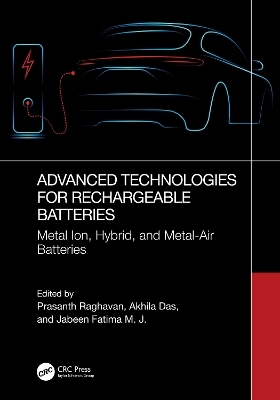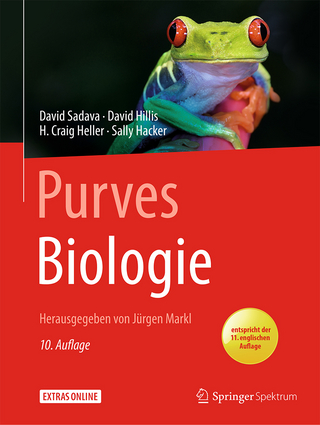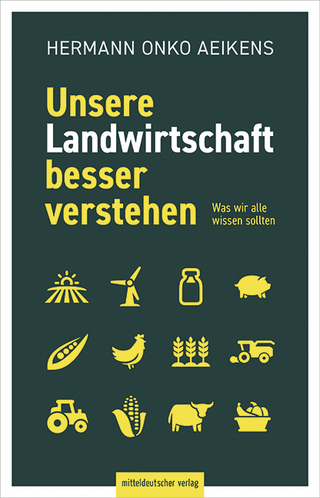
Advanced Technologies for Rechargeable Batteries
CRC Press (Verlag)
978-1-032-31536-2 (ISBN)
This volume covers recent advanced battery systems such as metal-ion, hybrid, and metal-air batteries. It includes an introduction to fluoride, potassium, zinc, chloride, aluminium, and iron-ion batteries; special or hybrid batteries are included, with calcium, nuclear, thermal, and lithium-magnesium hybrid batteries also explained. It summarizes the recent progress and chemistry behind the popular metal-air batteries, including a systematic overview of the components, design, and integration of these new battery technologies.
Features:
Covers recent battery technologies in detail, from the chemistry to advances in post-lithium-ion batteries
Various post-lithium-ion batteries are discussed in detail
Includes a section on ion batteries, exploring new types of metal-ion batteries
Focuses in each chapter on a particular battery type, including different metal-ion batteries such as zinc, potassium, aluminium, and their air version batteries
Provides authoritative coverage of scientific content via global contributing experts
This book is aimed at graduate students, researchers, and professionals in materials science, chemical and electrical engineering, and electrochemistry.
Prasanth Raghavan is a Professor, at Materials Science and NanoEngineering Lab (MSNE-Lab), Department of Polymer Science and Rubber Technology, Cochin University of Science and Technology (CUSAT), Visiting Professor at Biorefining and Advanced Materials Research Center, SRUC (Scotland’s Rural College), Edinburgh EH9 3JG, UK and at Department of Materials Engineering and Convergence Technology, Gyeongsang National University, Republic of Korea. Akhila Das is a graduate student pursuing Ph.D. at Materials Science and NanoEngineering Lab (MSNE-Lab), Department of Polymer Science and Rubber Technology (PSRT), Cochin University of Science and Technology (CUSAT), India. Jabeen Fatima M. J has recently joined Carborundum Universal Limited as Manager of Technology. She was previously engaged as a research scientist at Materials Science and NanoEngineering Lab (MSNE-Lab), Department of Polymer Science and Rubber Technology (PSRT), Cochin University of Science and Technology (CUSAT), India. Before joining MSNE Lab, she was working as a tentative Assistant Professor at Department of NanoScience and Technology, University of Calicut, India.
Chapter 1. Chloride Ion Batteries. Chapter 2. Potassium-Ion Batteries: Recent Trends and Challenges. Chapter 3. Zinc-Ion Batteries: Materials to Mechanism of Energy Storage. Chapter 4. Recent Advances and Trends in Al-Ion Batteries. Chapter 5. Characterization of Electrochemical Behaviour of all Iron-Ion Batteries for Grid-Scale Applications. Chapter 6. Calcium Ion Batteries. Chapter 7. Nuclear Batteries: An Overview. Chapter 8. Magnesium–Lithium Hybrid Batteries. Chapter 9. Metal-Air Batteries: Future of Hybrid or Electric Vehicles (HEV or EV). Chapter 10. Lithium-Air Batteries: Batteries for Emerging Electric or Hybrid Electric Vehicles (EV or HEV), a Focus into General Aspects and Electrolyte Engineering. Chapter 11. Lithium-Air Batteries: State-of-the-Art Developments in Anode, Cathode, and Electrocatalyst. Chapter 12. Emerging Magnesium-Air Battery Technology: Electrolyte and Anodic Materials. Chapter 13. Emerging Magnesium-Air Battery Technology: Cathodic Materials. Chapter 14. Advancements in Sodium-Air Batteries: General Electrochemical Mechanisms and Advances. Chapter 15. Emerging Sodium-Air Batteries: Developments in Anode Stabilization. Chapter 16. Advancements in Air Cathodes in Sodium-Air Batteries: Cathode Materials. Chapter 17. Innovative Design Strategies in Electrolyte Engineering and Separator Modifications for Sodium-Air Batteries. Chapter 18. Rechargeable Zn-air Battery: Current challenges and opportunities. Chapter 19. Emerging Cost-Efficient Aluminium-Air Battery Technology-Anode Materials. Chapter 20. Emerging Cost-Efficient Aluminium-Air Battery Technology: Cathode Materials. Chapter 21. Emerging Cost-Efficient Aluminium-Air Battery Technology: Electrolyte Materials
| Erscheinungsdatum | 11.07.2024 |
|---|---|
| Zusatzinfo | 20 Tables, black and white; 135 Line drawings, black and white; 84 Halftones, black and white; 219 Illustrations, black and white |
| Verlagsort | London |
| Sprache | englisch |
| Maße | 178 x 254 mm |
| Gewicht | 889 g |
| Themenwelt | Naturwissenschaften ► Biologie |
| Technik ► Elektrotechnik / Energietechnik | |
| Technik ► Umwelttechnik / Biotechnologie | |
| ISBN-10 | 1-032-31536-9 / 1032315369 |
| ISBN-13 | 978-1-032-31536-2 / 9781032315362 |
| Zustand | Neuware |
| Haben Sie eine Frage zum Produkt? |
aus dem Bereich


